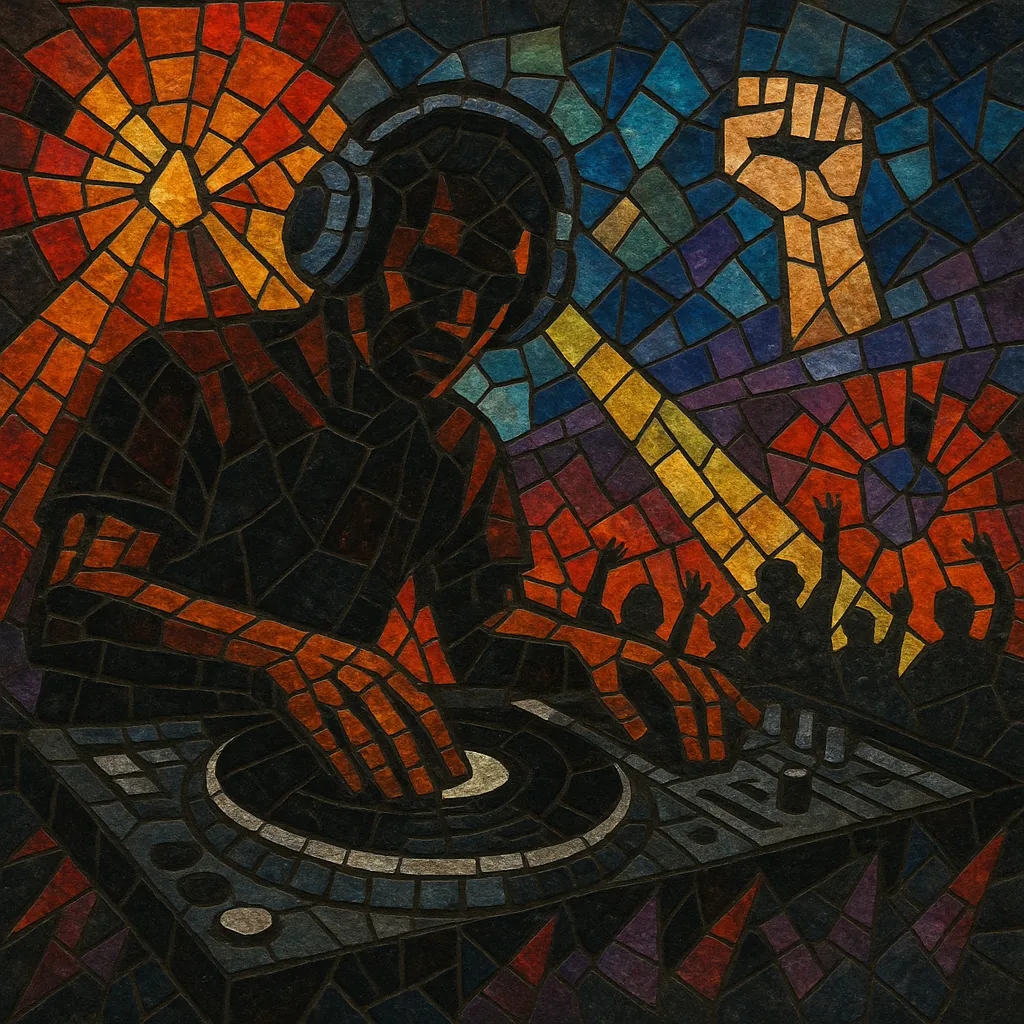
Hardcore breaks is a revivalist breakbeat style that recreates and updates the sound of early 1990s UK rave and breakbeat hardcore using modern production. It centers on fast chopped breakbeats, booming sub‑bass, rave stabs, pianos, and euphoric vocal snippets.
Typically running around 150–165 BPM, hardcore breaks emphasizes the raw energy and sample-driven collage of the original oldskool era while benefiting from contemporary sound design and mixing techniques. Expect Amen/Think/Apache breaks, Hoover and Reese bass timbres, pitch‑shifted vocals, and hands‑in‑the‑air breakdowns designed for dancefloors.
While closely related to breakbeat hardcore and jungle, hardcore breaks is characterized by a deliberate “back‑to‑’91–’93” aesthetic—keeping the rave spirit (pianos and stabs) prominent, with edits and fills that nod to both early hardcore and later jungle innovation.
Hardcore breaks draws its DNA from the early UK breakbeat hardcore scene, which fused acid house and techno with hip‑hop sampling and ragga/dub influences. Producers chopped funk breaks (e.g., Amen/Think/Apache), layered Reese and Hoover timbres, and used pianos and diva vocals to create euphoric peaks. This era laid the blueprint that would later split into happy hardcore and jungle/drum & bass.
In the early 2000s, UK DJs and producers began intentionally recreating the ’91–’93 sound with contemporary tools, coalescing under the tag “hardcore breaks.” Independent labels, online forums, and white‑label culture helped circulate the style. Labels connected to the oldskool ethos (e.g., Kniteforce/KFA and newer specialist imprints) championed fresh material that sounded like lost classics but with tighter low‑end and cleaner mixes.
Throughout the 2010s and into the 2020s, hardcore breaks remained a niche yet international scene, intersecting with oldskool‑focused jungle, piano rave, and broader breakbeat revivals. Artists embraced hardware samplers, time‑stretch artifacts, and classic stab presets, while events and radio shows kept the culture alive. Vinyl and Bandcamp releases, alongside DJ mixes, cemented a canon that both venerates the original rave spirit and keeps pushing subtle updates.
The hallmark is the balance between breakbeat aggression and rave euphoria: fast break edits, big subs, piano lifts, and short, hooky vocal samples. Arrangements typically feature DJ‑friendly intros, tension‑building breakdowns, and explosive drops, mirroring the dynamics of the early rave era.

